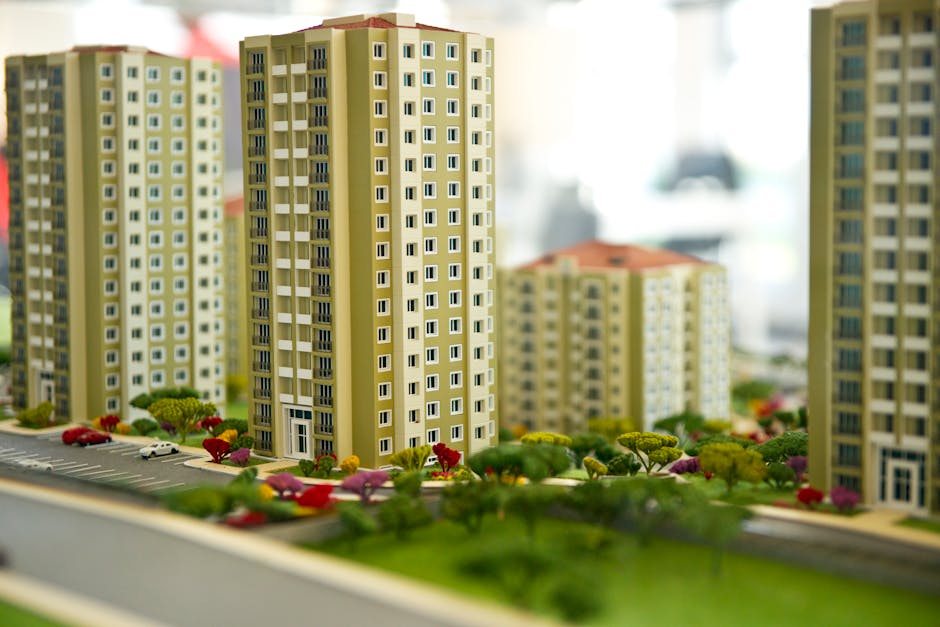Introduction: New Model Homes vs. Resale Homes
When you’re on the hunt for a house, the question pops up: should you go for a brand-new model home or settle on a resale? It’s not just about picking a place to crash. It’s about deciding between the charm of lived-in walls and the allure of untouched surfaces. New model homes scream modernity with their up-to-date designs and energy-efficient features. However, they might dig deeper into your wallet. On the flip side, resale homes bring the promise of character, potentially lower price tags, and established neighborhoods. But, you might have to deal with outdated layouts or hidden repair costs. Weighing the pros and cons isn’t just smart; it’s crucial for finding a place that feels like home. Let’s dive into what each choice offers to help you make an informed decision.
What are New Model Homes?
New model homes are basically brand-new houses that are built with the latest designs, building materials, and technology. Builders showcase these homes to help you visualize what your future home could look like, filled with the newest trends in home design and efficiency. They come with untouched appliances, pristine walls, and floors, and often incorporate modern amenities that older homes might lack. Plus, when you opt for a new model home, you’re stepping into a place no one else has lived in before, offering a unique sense of ownership. But remember, while they sparkle with allure, they might also come with a heftier price tag compared to older, resale homes.
The Advantages of Buying New Model Homes
When it comes to buying a house, getting a new model home has its perks. First off, everything’s brand spanking new. You’re the first to live there, which means no inherited problems from previous owners. These homes often come with the latest designs and building materials, meaning more energy efficiency and lower bills for you. Big plus, right? Then there’s customization. Depending on the builder, you might get to pick out finishes, floor plans, and other details. It’s like being part of the building process without lifting a hammer. Also, new homes are built to meet current building codes, so they’re safer and up-to-date on environmental standards. Lastly, warranties. New homes come with warranties for construction and appliances, giving you peace of mind knowing that if something goes wrong, you’re covered. So, if the smell of fresh paint excites you and being the first to call a place home sounds appealing, a new model home might just be your ticket.
The Disadvantages of New Model Homes
Buying a new model home might sound like the dream, but it’s not without its downsides. First off, they can hit your wallet hard. New constructions typically come at a premium compared to resale homes. You’re not just paying for the house but also for its brand-new status. Then there’s the waiting game. If you’re buying before it’s built, you could be in for a long wait before you can move in. And while waiting, you might face temporary housing costs. Also, customization, which sounds great, often leads to budget blowouts. Even small changes or upgrades can add a hefty sum to your final bill. New neighborhoods can feel a bit empty and lacking in character until they’re fully developed. Plus, there’s always the risk of builder bankruptcy. If your builder goes under before your home is done, you could be left in the lurch. Finally, new homes can come with unexpected kinks or construction defects that might not be apparent right away, leaving you to deal with the aftermath.
Understanding Resale Homes
When we talk about resale homes, we’re looking at properties that have been lived in before. These come with their own set of advantages and challenges. One of the biggest pros is that these homes usually have a lower price tag than brand new houses. You’re also moving into an established neighborhood, which means mature trees, a settled community, and often, closer proximity to city centers. Plus, there’s potential to snag a home with unique character and history that newer models can lack.
On the flip side, resale homes might need more TLC. Think renovations, repairs, and updates to make it truly yours or even just livable. Older homes can also come with less modern features and amenities, and potentially, bigger energy bills due to outdated systems. The key is to weigh these factors carefully. Consider what’s non-negotiable for you and what you’re willing to compromise on. And always, always get a thorough inspection to avoid any costly surprises down the line.
The Benefits of Choosing a Resale Home
When you’re looking into buying a home, resale homes come with a unique set of benefits. First off, they’re usually cheaper than new models. You’re not just buying a house; you’re buying into a neighborhood with a defined character and established amenities. Trees? They’re grown. Schools? Already there, with reputations you can research. Plus, resale homes often come with upgrades from previous owners who’ve added personal touches or necessary repairs—meaning you might get a bit more bang for your buck. And unlike new constructions, what you see is what you get. There’s no waiting around for a house to be built, so you can move in faster. Sure, there might be some wear and tear, but often, the cost savings and immediate availability can make a resale home an attractive option for many homebuyers.
The Drawbacks of Resale Homes
When looking at resale homes, remember they come with history. That means wear and tear. It’s like buying a used car; it may look nice, but you don’t know how it’s been driven. Wear and tear can lead to more repairs and upgrades sooner than you’d expect. You’re also stuck with the previous owner’s choices. Love orange bathrooms? Great! Hate them? Too bad. Older homes might not meet current energy efficiency standards either, so expect higher utility bills. You might also find that resale homes lack the modern amenities and open floor plans popular in newer homes. Lastly, competition can be fierce for well-located resale homes, possibly leading to bidding wars that drive up the price. So while they might initially seem like a bargain, resale homes come with their own set of challenges.
Making the Decision: Factors to Consider
When mulling over buying a new model home versus a resale property, the decision hinges on what you value most. New model homes come fresh, untouched, and often equipped with the latest trends and technology. You get to be the first to live in it, which feels special. These properties usually offer modern layouts and energy-efficient systems, shaving dollars off your utility bills. You might also score customization options if you buy early in the construction phase. But, remember, new constructions can hit your wallet hard, not just in upfront costs but also in unexpected expenses like landscaping or window treatments, which are often not included.
On the flip side, buying a resale home means embracing history and character. These homes often sit in established neighborhoods with mature trees and established communities. Price-wise, they can be gentler, offering more bang for your buck in terms of square footage and features. Plus, what you see is what you get; there’s no risk of construction delays or budget overruns. But, the age of the house can bring maintenance surprises. Systems might be outdated, requiring updates sooner than you’d like.
So, what’s the verdict? It boils down to your priorities. If the idea of crafting a home that’s uniquely yours appeals, and you’re game for the potential challenges in budgeting and waiting, a new model home could be your dream come true. If you lean towards value, character, and a little bit of history, with a readiness to tackle possible immediate updates, a resale home might just beckon you home. Weighing these factors will guide you to a decision that fits your lifestyle, budget, and long-term plans.
Financial Implications for New Homebuyers
When you’re eyeing that shiny new model home or considering the charm of a resale, money talks. New homes might shine with the latest designs and tech, but often come with a heftier price tag. The base price of a new home doesn’t always include everything. You might end up paying extra for landscaping, upgraded fixtures, or a finished basement. Think of it as ordering a burger and then paying more for all the toppings you want. On the flip side, resale homes frequently come at a lower purchase price, but they may hide costs like renovations or repairs. It’s like buying a used car; the initial cost is lower, but maintenance might get you.
Also, with new homes, developers sometimes offer incentives or closing cost assistance, which can sweeten the deal. However, in a hot market, don’t expect much room to negotiate the price down. Whereas with resale homes, you’ve got more wiggle room to haggle, especially if the home’s been on the market for a while.
Lastly, consider property taxes and homeowner’s association (HOA) fees. New communities often have higher taxes and HOA fees because they fund the building of infrastructure and amenities like pools or parks. On the other hand, established neighborhoods might offer lower fees but with older amenities.
So, what’s it going to be for you? Shiny and new with a possibly higher cost, but less immediate out-of-pocket repairs? Or the charm of an older home that might need some love but keeps more cash in your wallet upfront? The decision impacts your finances in the short and long term, so choose wisely.
Conclusion: Weighing Your Options
Deciding between a new model home and a resale property isn’t as straightforward as picking what looks nicest. You’ve got to consider your lifestyle, budget, and future plans. New homes shine with the latest designs and technology, making them energy efficient and often customizable. However, they can tug on your wallet harder and might come with wait times due to construction. On the flip side, resale homes can be kinder to your budget and allow you to move in quickly. They often sit in established neighborhoods with a sense of community. Yet, be prepared for potential renovations or less modern features. Ultimately, your choice should align with what you value most in a home—whether that’s cutting-edge design and customization or character and cost-effectiveness. Take your time, weigh your options carefully, and pick the path that feels right for your vision of home sweet home.




